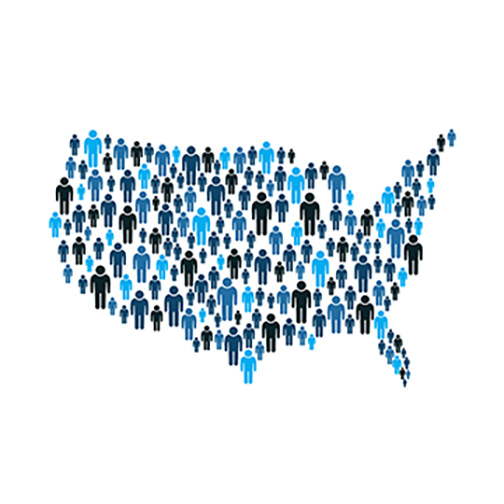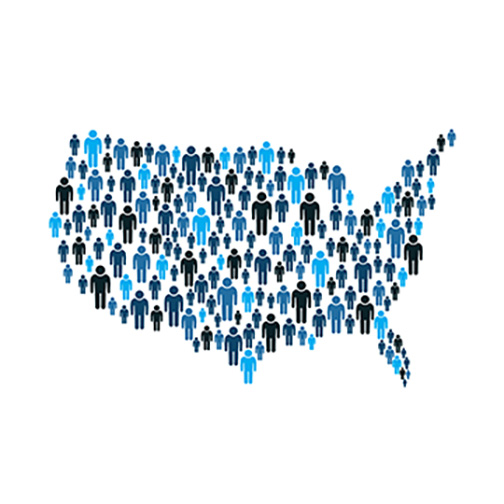
Multicultural and Hispanic Marketing: A Marathon Not a Sprint
Filed Under: Best Practices, Market Research, Hispanic / Latino, Multicultural
Ana Villodres
Senior Director, In-Person Qualitative Research
Jorge Martínez-Bonilla
Senior Vice President, CultureBeat
When Marketing to Hispanic Consumers, Don’t Let Enthusiasm Erosion Happen
“I have promised myself, many times, to one day run a marathon. I always start with the best intentions. I get all excited and plan an aggressive training regimen, and then my momentum, for no clear reason, begins to fade over time.”
I first wrote this piece in 2018, and to date, I haven’t run that marathon, but I still aspire to do it one day! But when it comes to your marketing strategies, you should, at all costs, avoid being the marathon runner I am. Of course, it’s great to set a lofty goal for yourself, your company, department, or product. However, following through and accomplishing that goal takes hard work, dedication, and maybe even some painful learning and growth. In the case of running a marathon, you need to learn a lot about your body and how it works – nutrition, stride, and which shoes work best for the way you run. This can involve trial and error (which can be expensive and without immediate results) – running shoes pile up, and blisters accumulate, which wears down even the most dedicated runner’s enthusiasm. For a brand or product, similar learning must occur when marketing to Hispanics to address and connect with a multicultural audience authentically. Learning that takes time and effort to understand how a brand resonates with multicultural consumers and how it intersects with their lives, culture, and values.
Multicultural and Hispanic Market Research & Insights Pave the Way
At C+R, we have been pioneers and strong proponents of diversity and inclusion in our research studies since the 1990s. This is why we created our Hispanic and Multicultural divisions, LatinoEyes and CultureBeat, which are entirely devoted to helping companies get an authentic and thorough understanding of multicultural and Hispanic consumers.
Given our unique vantage point, we see this scenario all too often, where marketers seem to lose sight of their ultimate goal, simply don’t know how to get there, or encounter awkward information that makes continuing less pleasant. Like runners assessing new shoes, companies need to consider many aspects of their multicultural targets and research how best to approach these cohorts. Not doing so can lead to misdirected efforts that fizzle, or worse, misguided marketing efforts that flop. It tends to unfold something like this:

A new census report officially states the size of the U.S. multicultural populations (African Americans, Asian-Americans, Hispanics, Native Americans, etc.). Then, the marketing engines and top management quickly notice these populations’ potential revenue. They begin to build momentum around it, investing in consumer research, advertising, designing multicultural marketing strategies, etc. They start dipping their toes into the waters of multicultural marketing, but after a few years, the initial excitement fizzles out. The impetus is gone. Eventually, marketers seem to forget the importance of multiculturalism and devoted loyalists and purchasers of their products altogether.
“Yes, we did some research, but it was a long time ago, about a couple of years back” or “We had a very good campaign, it worked really well, and management was on board… but I’m not sure if we’re doing anything with multiculturals at this time.”
These are the responses that we typically get when our clients reflect on their recent multicultural marketing investments. And, like some of us would-be marathoners who have yet to start training, we also hear, “ We’ve never done anything to market specifically (or directly) to multicultural consumers.”. And there are many other brands that haven’t quite figured out how to include multicultural consumers specifically in their overall business strategies, so they vacillate.
How to Market to Hispanic Consumers
Like the marathon runner who failed to prepare appropriately for the long-distance haul, brands often train more for the shorter sprint. Multicultural and Latino marketing is a goal that takes the commitment of a marathon. Wise marketers keep their eyes on the prize for the long run while continuously staying in touch with their consumers. For them, it is not just about reading reports and articles relating to these consumers rather, it is about getting to know each cohort deeply and sometimes personally through research or consumer immersions.

Over the last few years, I have noticed some brands starting to think about multicultural and Hispanic consumers for the longer run. Little by little, these brands have developed a foundational and long-term understanding of the U.S. total market. They now recognize multicultural consumers as not an afterthought but a priority. These brands are like a few of my friends, transitioning from occasional runners to long-term marathonists, and I am always impressed by their results. It has paid off for them.
I hope you are one of my friends, but if you are not and find that your initial enthusiasm and support are fizzling out, trust me, you’re not alone here. But don’t despair! It’s never too late to be a champion of multiculturalism and be that savvy person who simply gets it. You can be that leader in your company who can speak to how establishing a true connection with multicultural consumers can bolster your brand’s prominence and, in turn, increase your revenue.
The Numbers Speak for Themselves: Multicultural Census Facts
Here are a few facts to keep in your back pocket to pull out whenever you need to be that multicultural champion in the room:
- The Multicultural population is here to stay, and they’re growing fast. In 2020, the Census Bureau released new data revealing that our country’s Latino population increased 23% to 62.1 million people (16.3% of the U.S population). And their Asian counterparts comprise 6.3% of the nation’s population at 20.6 million (not in combination with another race).
- The U.S. (and the world) is a blend of colors and cultures. The new census reflects racial and cultural integration with children leading the nation’s growing diversity. 52.7% of the U.S. population under age 18 are part of a minority group.
- They have money. Lots of it.
Hispanic buying power is estimated to be at $1.5 trillion—larger than the GDP of Australia. Furthermore, the combined buying power of African Americans, Asian Americans, and Native Americans is estimated to be $2.4 trillion. To echo Buzzfeed, “If Latinos were a US state, they would have the second-largest economy” with California being the only state ahead of them. - Despite the continued tense political discourse, America is embracing this change. A report by The Pew Research Center reveals that in general, the public is “more accepting of the trend toward children having parents of different races.” In one survey they conducted, 22% of adults responded by saying that having more children with parents of different races is a good thing for our society. Although half as many reported having said the opposite (yes, there is still some dissent and opposition, but how boring would it be if everyone agreed?).
So, given this collection of facts, you must ask yourself: Why not invest more in understanding and connecting with these consumers? Why not be that friend who moved from rarely running or even exercising to now running marathons? Don’t throw in the towel and quit now! Start training and run that marathon that you’ve been dreaming about!
explore featured
Case studies


